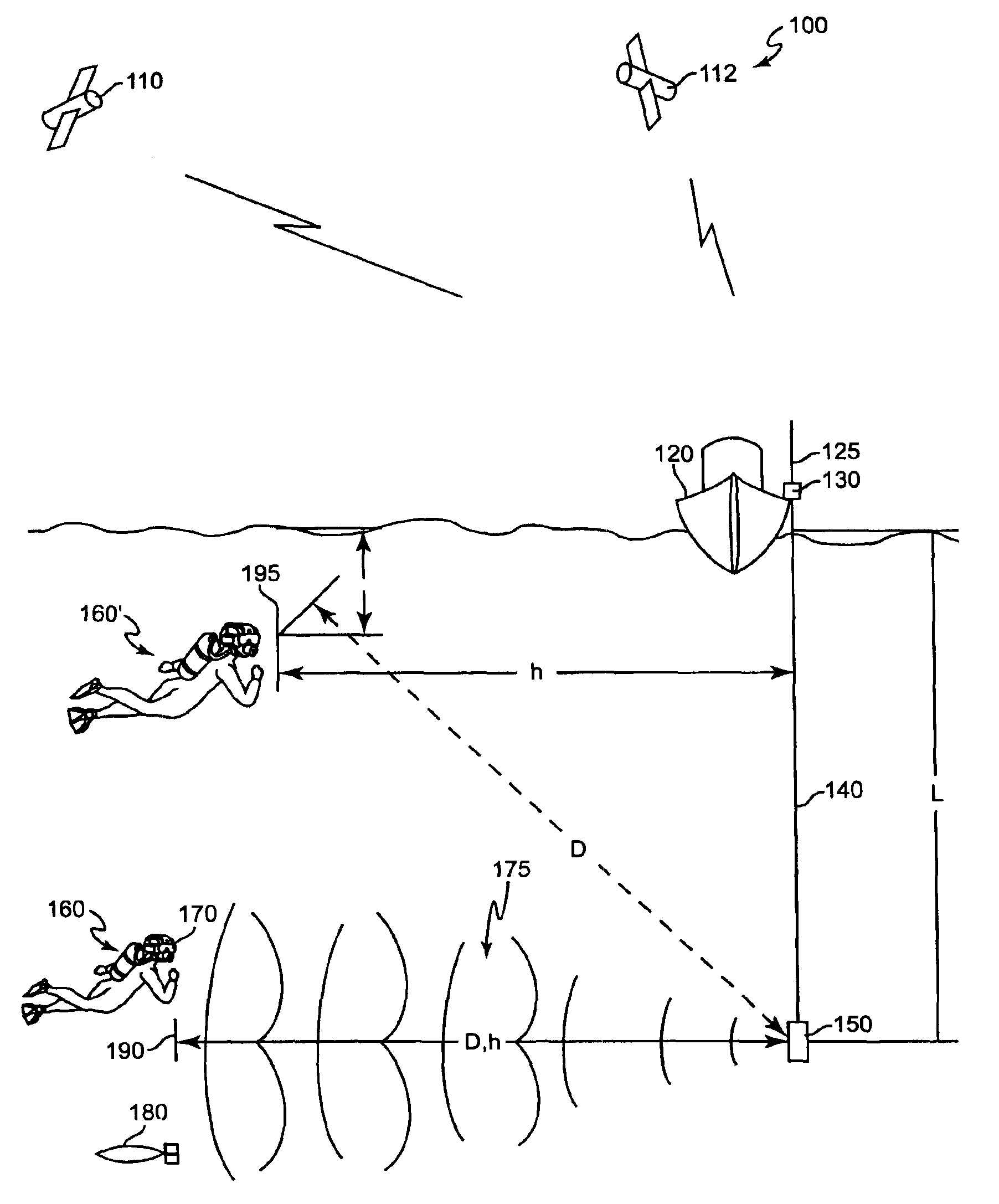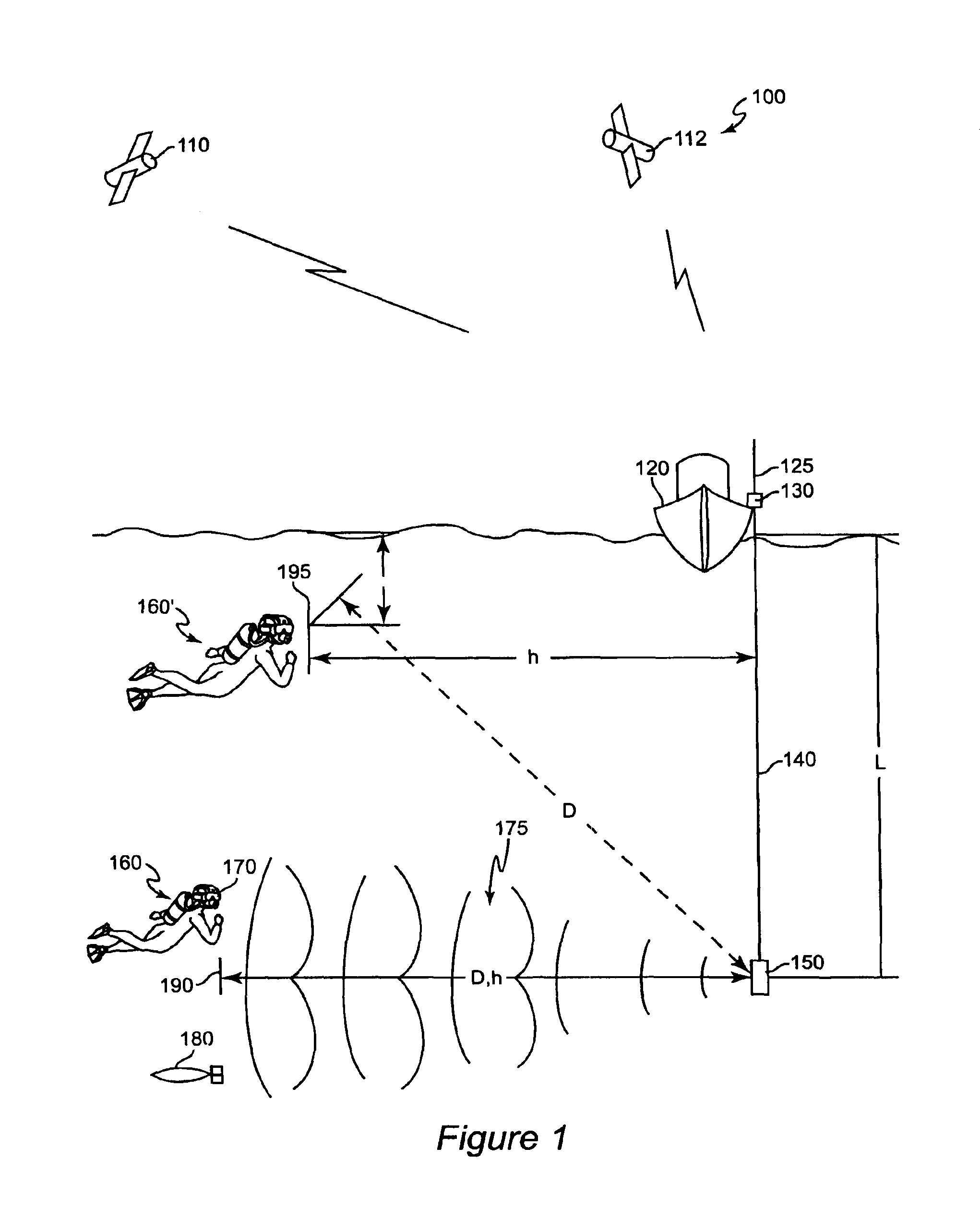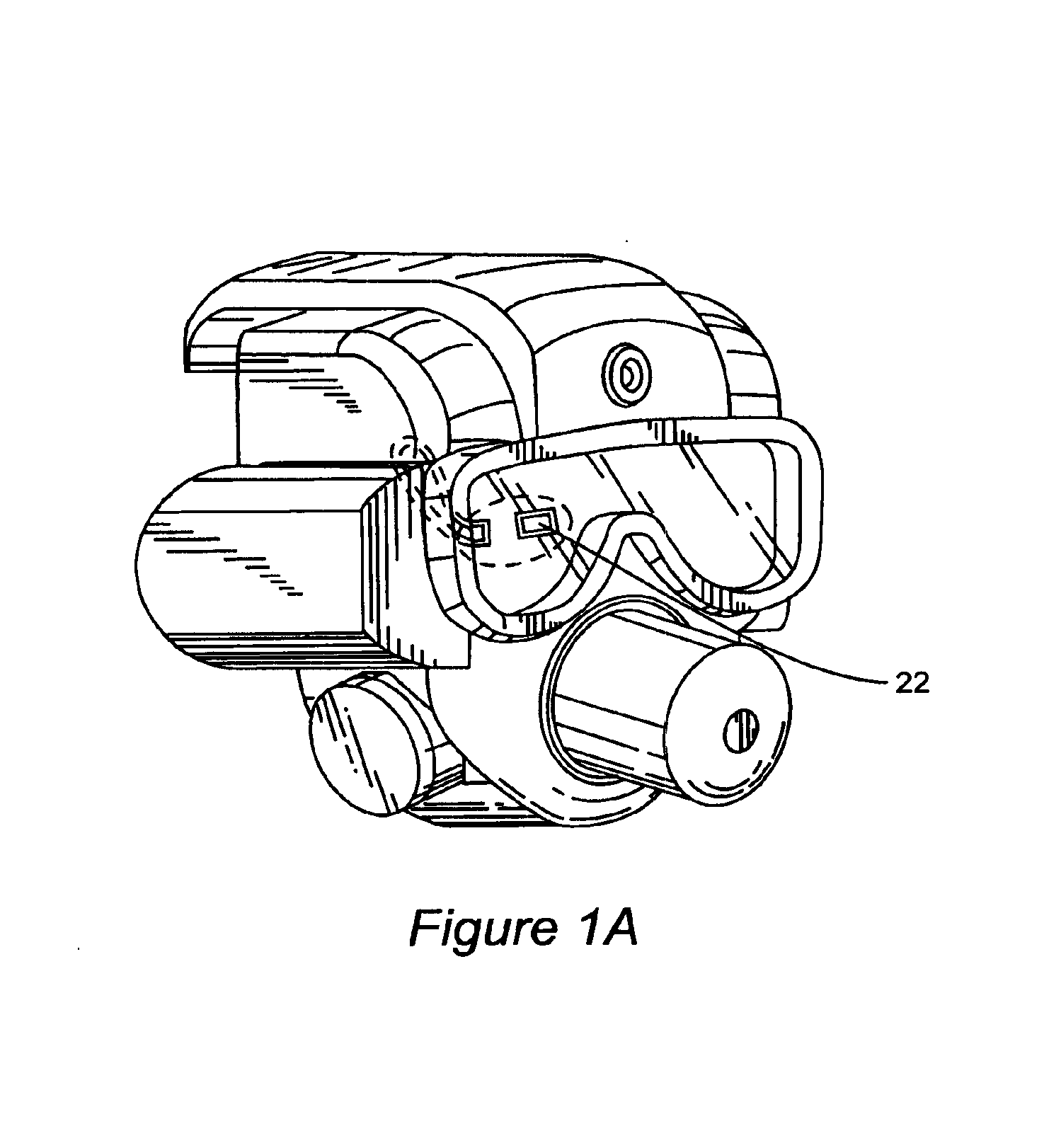Method for determining, recording and sending GPS location data in an underwater environment
a technology of location data and underwater environment, applied in the field of position determination, can solve the problems of ineffective underwater gps, limited accuracy to the inherent tolerances of gps receivers, and inability to use underwater gps, etc., and achieve the effect of accurate and effective use of gps
- Summary
- Abstract
- Description
- Claims
- Application Information
AI Technical Summary
Benefits of technology
Problems solved by technology
Method used
Image
Examples
first embodiment
[0020]Referring now to FIG. 2, a first embodiment of the invention will be discussed to convey an understanding of the basic principles of the invention sufficient to its successful practice. In the simplest form of this embodiment, a GPS receiver 1 is mounted on a boat preferably as discussed above in connection with FIG. 1. A small computer (e.g. surface computer module 4 and control software program 11) may be connected to the GPS receiver but is not necessary in the simplest form of the invention. A modulator 8 may be connected to the computer. A sonar transmitter 2 is provided and may be connected to the modulator 8. A diver or vehicle is in the water and preferably attached to a sonar receiver 3 associated with a receiver processor 12 and an embedded software program 20 which provides ranging data as in the EyeSee™ system described above and the combining of the ranging data with the GPS data input to processor 12 form GPS receiver 3 or otherwise as will be described below. Th...
embodiment two
[0026]In a second embodiment of the invention as illustrated in FIG. 3 and including all of the elements discussed above in connection with FIG. 2, a user operable switch 19 is added to the sonar receiver that is attached to the diver or vehicle that allows the storage of the prevailing GPS coordinates and the time / date (e.g. time stamp of the mark operation) provided by real time clock 14 that the position was recorded in RAM 15 which is attached to the secondary processor 12′ when the switch 19 is actuated. The amount of individual locations that can be marked is a function of the storage capacity of the RAM chip or board employed. A second user operable switch, preferably incorporated with switch 19 as a three-position switch, allows the activation of “Mark Recall” mode which is a secondary function of the software program 20 residing on the secondary processor 12′ which preferably displays historical “mark” activations in the reverse order of which they were recorded. While not ...
embodiment three
[0029]In this more complex embodiment illustrated in FIG. 4, the basic hardware configuration described in Embodiment One (FIG. 2) and / or Embodiment Two (FIG. 3) is augmented for increased functionality. The sonar transmitter 2 connected to the support vessel is pre-selected to broadcast of a first channel such as at Frequency A and is thus designated 2A. The sonar receiver 3, attached to the diver or vehicle is preselected and filtered to receive only Frequency A transmissions (also used as the sonar communication link for ranging) and thus designated 3A. A demodulator 18 is connected to the sonar receiver (for its input) and the secondary processor 12′ (for its output) and preferably residing on the sonar receiver 3A attached to the diver or vehicle.
[0030]A modulator 8B is connected to the secondary processor 12′ which is attached to the diver or vehicle. A sonar transmitter 2B preselected to broadcast on a second channel such as at Frequency B is connected to the modulator 8B. Li...
PUM
 Login to View More
Login to View More Abstract
Description
Claims
Application Information
 Login to View More
Login to View More - R&D
- Intellectual Property
- Life Sciences
- Materials
- Tech Scout
- Unparalleled Data Quality
- Higher Quality Content
- 60% Fewer Hallucinations
Browse by: Latest US Patents, China's latest patents, Technical Efficacy Thesaurus, Application Domain, Technology Topic, Popular Technical Reports.
© 2025 PatSnap. All rights reserved.Legal|Privacy policy|Modern Slavery Act Transparency Statement|Sitemap|About US| Contact US: help@patsnap.com



